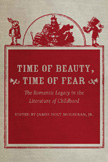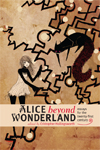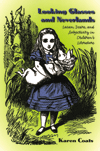Time of Beauty, Time of Fear
“James McGavran’s work on Romanticism and its effects on children’s literature has been among the most substantial on the subject. The range of topics he covers in Time of Beauty, Time of Fear is both broad and deep. This work is a welcome and substantive contribution to the study of children’s literature and to the study of Romanticism and its influences.”—Roberta Seelinger Trites, author, Disturbing the Universe and Waking Sleeping Beauty
“Unencumbered by jargon—any educated reader who wished to peruse the book could safely do so—James McGavran’s Time of Beauty, Time of Fear will be of interest not just to scholars of children’s literature and childhood or students of Romanticism, but also to people from a range of scholarly interests, including gender studies and popular culture studies.”—Philip Nel, coeditor, Keywords for Children's Literature
It is now two and a half centuries since Jean-Jacques Rousseau first wrote so evocatively of natural man in Social Contract and of experiential education in Emile. His emphasis on the early years as a crucial part of life drove the Romantic reconceptualization of childhood—the idea that children have a special knowledge of nature, politics, and spirituality to teach their elders as well as the other way around. William Wordsworth’s assertion in the “Intimations Ode” that children’s souls come “trailing clouds of glory” from God has continued to haunt Western literature and culture in spite of attacks from writers and critics from then until now, including Mary Wollstonecraft, Robert Thomas Malthus, T. S. Eliot, Judy Blume, Jerome McGann, and Jacqueline Rose.
Displaying careful scholarship, sophisticated use of contemporary literary theory, and close readings of texts while recovering and analyzing materials from more than two centuries of British and other Anglophone cultural history, this collection of new essays traces the evolution of the Romantic child. The contributors play off one another, both within the three traditional historical periods—Romantic, Victorian, and modern/postmodern—and across intellectual and disciplinary categories.
Time of Beauty, Time of Fear offers a stunning array of essays. In some, the authors focus on canonical texts by such writers as Wordsworth, Maria Edgeworth, Charlotte Smith, and Mrs. Molesworth. Other authors consider the Victorian concerns with missionary literature for children and with the boyish pastime of collecting bird’s nests, folk voices of the 1960s, homeschooling, the Teletubbies television program, and Alan Moore’s Promethea series of graphic novels. Measured in terms of both range and quality, this volume is destined to become essential reading for scholars from numerous disciplines.
Jennifer Smith Daniel
Elizabeth A. Dolan
Richard Flynn
Elizabeth Gargano
Mary Ellis Gibson
Dorothy H. McGavran
Roderick McGillis
Claudia Mills
Jochen Petzold
Malini Roy
Andrew J. Smyth
Jan Susina






